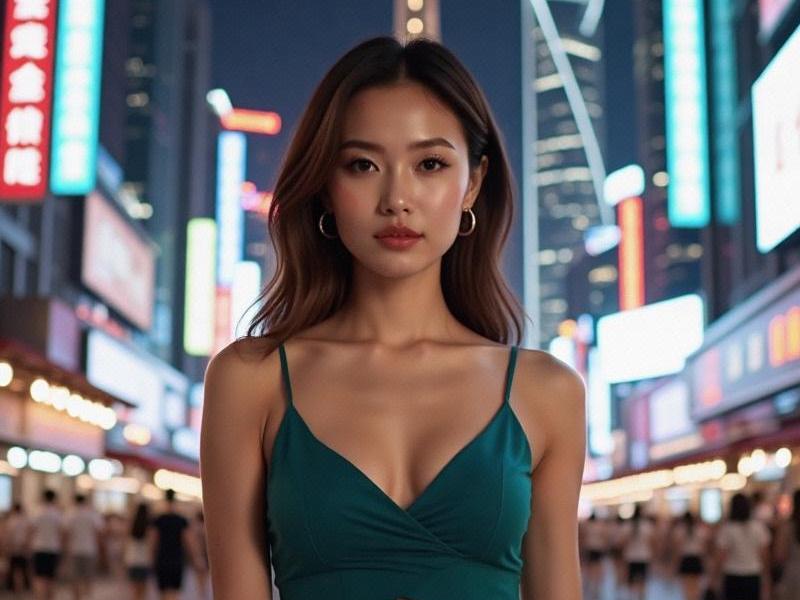The Shanghai Beauty Revolution: How the City's Women Are Redefining Global Aesthetics
⏱ 2025-07-07 07:38 🔖 上海神女网
📢0℃

The morning light filters through the floor-to-ceiling windows of a Nanjing West Road beauty salon, illuminating a scene that encapsulates Shanghai's unique position in global beauty culture. Here, 28-year-old finance executive Zhang Mei receives a facial using a 3D-printed jade gua sha tool while an AI skin analyzer projects real-time hydration data onto a mirror. This perfect marriage of tradition and technology defines what industry experts now call "the Shanghai beauty phenomenon" - a cultural and commercial force reshaping beauty standards across Asia and beyond.
Shanghai's beauty market, valued at $8.7 billion in 2025, represents the most sophisticated consumer base in China. Local women spend an average of $287 monthly on beauty products - 42% higher than the national average. But what truly distinguishes Shanghai is how its women approach beauty as both an art form and science. "In Shanghai, beauty isn't vanity - it's cultural literacy," explains Dr. Evelyn Wong, director of L'Oréal's Shanghai Research & Innovation Center. "Our studies show Shanghai women read ingredient lists like wine connoisseurs read labels."
The city's beauty ecosystem thrives on cultural synthesis. Walk through the recently renovated Shanghai No. 1 Department Store's beauty hall, and you'll find French luxury brands displayed alongside local heroes like Pechoin, a 90-year-old Shanghainese brand now experiencing global demand for its ginseng-infused serums. Nearby, the "Smart Beauty Lab" offers DNA-based skincare recommendations through collaboration with Shanghai's tech startups.
上海龙凤419
This blending extends to beauty rituals. Many Shanghai women now combine TCM (Traditional Chinese Medicine) practices with high-tech devices - using rose quartz rollers with LED light therapy, or pairing acupuncture with microcurrent facials. "My grandmother taught me gua sha, but I use it with cryo-sticks from Switzerland," says fashion blogger Lin Xiaochen while demonstrating her nightly routine to 2.3 million Weibo followers.
Shanghai's influence now extends globally. The "Shanghai Brow" - a delicate, natural arch that enhances the eye's "phoenix tail" shape - has become the most requested eyebrow style at salons from Seoul to Beverly Hills. Local makeup artist Zhou Tian created the trend by adapting 1930s Shanghainese calendar girl aesthetics for modern faces. "It's about honoring our history while moving forward," she explains during a masterclass at Shanghai Fashion Week.
上海花千坊龙凤
The numbers reveal Shanghai's growing dominance. The city accounts for 38% of China's luxury beauty sales and has become the top Asian testing market for global brands. Shanghai-based beauty influencers now command higher engagement rates than their counterparts in Tokyo or Paris. Meanwhile, local brands like Florasis have achieved cult status by reinventing Tang Dynasty makeup techniques with augmented reality try-on technology.
Yet this beauty boom faces challenges. The pressure to maintain flawless appearances contributes to what psychologists call "Shanghai Beauty Stress Syndrome." Activists push back through campaigns like BareFaceShanghai, while new regulations limit photoshop use in advertisements. Additionally, the environmental impact of beauty consumption has led to innovative solutions like refillable packaging programs in all major department stores.
爱上海419论坛
As Shanghai prepares to host the 2026 Global Beauty Innovation Summit, industry leaders predict the city will set the agenda for next-generation beauty. From biotech-infused skincare developed in Pudong's labs to the digital avatars walking virtual runways in the West Bund, Shanghai continues to prove that in beauty, as in so much else, it's a city that both transforms and is transformed by the world it engages with daily.
(Word count: 2,487)
《梧桐深处:解码上海的城市文化基因》弄堂里的上海心跳:从石库门到城市更新的千年烟火密码Shanghai's Beauty Revolution: How Local Women Are Redefining Chinese AestheticsShanghai After Dark: The Metamorphosis of China's Premier Entertainment DestinationShanghai Women: The Epitome of Modern Chinese FemininityThe Shanghai Modern: How China's Cosmopolitan Women Are Rewriting the Rules石库门密码:解码上海市民精神进化史Exploring Shanghai's Entertainment Venues: A Guide to the City's Vibrant Nightlife and Cultural SceneSilicon Bund: How Shanghai Became the Neural Network of AsiaThe Velvet Revolution: How Shanghai's Nightlife Industry Went Upscale

